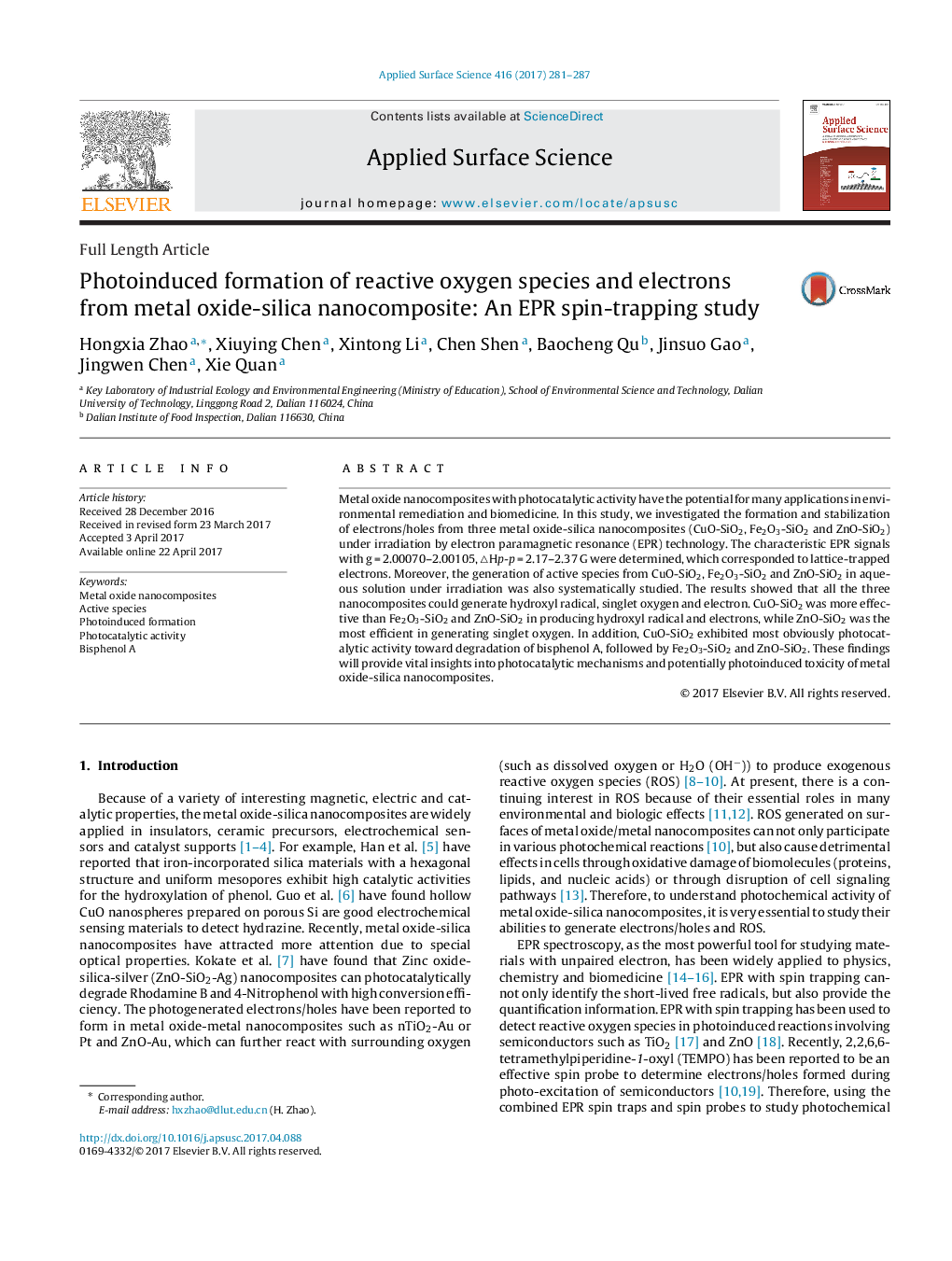| Article ID | Journal | Published Year | Pages | File Type |
|---|---|---|---|---|
| 5350442 | Applied Surface Science | 2017 | 7 Pages |
Abstract
Metal oxide nanocomposites with photocatalytic activity have the potential for many applications in environmental remediation and biomedicine. In this study, we investigated the formation and stabilization of electrons/holes from three metal oxide-silica nanocomposites (CuO-SiO2, Fe2O3-SiO2 and ZnO-SiO2) under irradiation by electron paramagnetic resonance (EPR) technology. The characteristic EPR signals with g = 2.00070-2.00105, ÎHp-p = 2.17-2.37 G were determined, which corresponded to lattice-trapped electrons. Moreover, the generation of active species from CuO-SiO2, Fe2O3-SiO2 and ZnO-SiO2 in aqueous solution under irradiation was also systematically studied. The results showed that all the three nanocomposites could generate hydroxyl radical, singlet oxygen and electron. CuO-SiO2 was more effective than Fe2O3-SiO2 and ZnO-SiO2 in producing hydroxyl radical and electrons, while ZnO-SiO2 was the most efficient in generating singlet oxygen. In addition, CuO-SiO2 exhibited most obviously photocatalytic activity toward degradation of bisphenol A, followed by Fe2O3-SiO2 and ZnO-SiO2. These findings will provide vital insights into photocatalytic mechanisms and potentially photoinduced toxicity of metal oxide-silica nanocomposites.
Related Topics
Physical Sciences and Engineering
Chemistry
Physical and Theoretical Chemistry
Authors
Hongxia Zhao, Xiuying Chen, Xintong Li, Chen Shen, Baocheng Qu, Jingsuo Gao, Jingwen Chen, Xie Quan,
